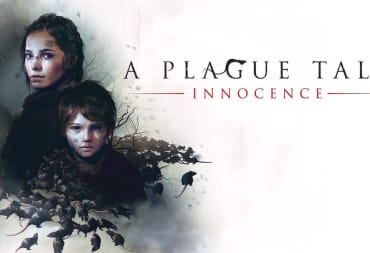Death, darkness, and disease. Three words that probably sum up the black plague better than any others. Those words also happen to perfectly summarize A Plague Tale: Innocence. A Plague Tale: Innocence follows the story of Hugo and Amicia De Rune, two children from a French noble family. When their home is attacked by the inquisition the pair find themselves thrown into a dangerous and uncaring world. Left to fend for themselves the pair must stick together and try their best to survive both the dangers of the world and the illness which afflicts young Hugo.
Amicia and Hugo's journey is intentionally very dark and emotional throughout. The gameplay blends elements of puzzles and stealth, very rarely putting the main characters in a position of power. The way the gameplay works is very heavily tied into the dark nature of the storyline. As they venture forth, they must contend with fear, death and thousands of plague-bearing rats at every turn.
Rats. Why did it have to be Rats?

Near the start of the game, you have to rely exclusively on stealth to survive. Your enemies are much stronger than you, able to kill you instantly if they find you. A general feeling of oppression follows you throughout the course of the game, constantly pushing you down and keeping you scared.
Apart from bloodthirsty human enemies, Plague Tale is filled with swarms of rats who will tear you apart if given the chance. While stealth is adequate to contend with human opponents the rats force you to exploit another weakness: light. The rats only seem to fear only the light, so you need to use it to your advantage.
Many of the puzzles you run into concern light. Figuring out how to get through a sea of rats with a constantly burning down stick is pretty common. Occasionally, you'll have to use lamps which shoot out a narrow beam to clear paths. Most of the puzzles don't require that much though for the first half of the game or so. It is only when the rats and human enemies start mixing that things start to get really intense.
A Plague Tale: Innocence | Like a fine wine

It can be an emotionally shattering experience trying to make your way through a disease-rat-ridden street while enemies search for you. Luckily the rats don't distinguish between you and the other humans in the area. As you progress, you get more and more used to having the rats do your dirty work for you.
The oppressive atmosphere of the world and the constant intensity of the gameplay pair very well together. Like a fine wine, Plague Tale actually gets better the longer you play it. At first, you mainly have to rely on rocks and pots to distract enemies so you can sneak by. In the final few hours, you have access to an impressive arsenal of different alchemical solutions. These solutions can achieve things like making fires, putting them out or even helping you to actively take down the enemies you once had to run in fear of.
Exploration is a massive factor in Plague Tale as well. To create different mixtures, you have to scavenge for the ingredients in the world. Often finding more ingredients will put you in danger, occasionally forcing you to actually walk into a large swarm of rats. Ingredients aren't the only reason to explore either. Several groups of collectibles can be found strewn around the game's world. These fill in details about the characters and the world, but also provide the main point of replayability. When you find a collectible it stays collected even if you replay older chapters. With such a linear, story-driven experience the only reason to go back to older sections is to collect items you've missed.
A Plague Tale: Innocence Review | Final Thoughts

The linear nature of Plague Tale is one of it's best features and one of its biggest downfalls. Unlike lots of games out there, the creators didn't feel the need to pad things out with open-ended gameplay. On one hand that has provided a very tight and driven experience which can better play to the emotional experience of the characters. On the other hand, it does mean that the gameplay can feel quite constrained, forcing you into the one path that the designers thought you needed to take to continue.
Overall the cinematic style and well constructed, emotional journey win out over a lack of open gameplay. You really start to feel for the characters as their problems begin to pile up. It's especially harrowing watching terrible things happen to children, without the 'action-movie' ridiculousness that plagues other titles. Having said that, the plot does go a bit loopy by the end, using elements that don't necessarily make too much sense in a realistic game world.
When all is said and done A Plague Tale: Innocence is a great singular experience. What it lacks in open gameplay and replayability, it makes up for with intense gameplay and emotional moments. The designers perfectly crafted the story they wanted to tell. The gameplay perfectly suits the downtrodden feeling of the world and there were surprisingly few annoying moments or gameplay glitches. Hugo and Amicia's journey is one of the most interesting experiences to come out so far this year and shines a light onto Asobo and the potential of their future work.
TechRaptor reviewed A Plague Tale: Innocence on PlayStation 4 with a copy provided by the publisher.
Review Summary
Pros
- Well Constructed Narrative
- Emotionally-Driven Characters
- Simple Gameplay Doesn't Get In The Way Of The Story
Cons
- Not Loads Of Replayability
- Very Specific Solutions To Certain Obstacles
Have a tip, or want to point out something we missed? Leave a Comment or e-mail us at tips@techraptor.net









